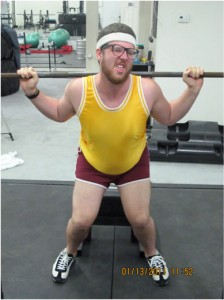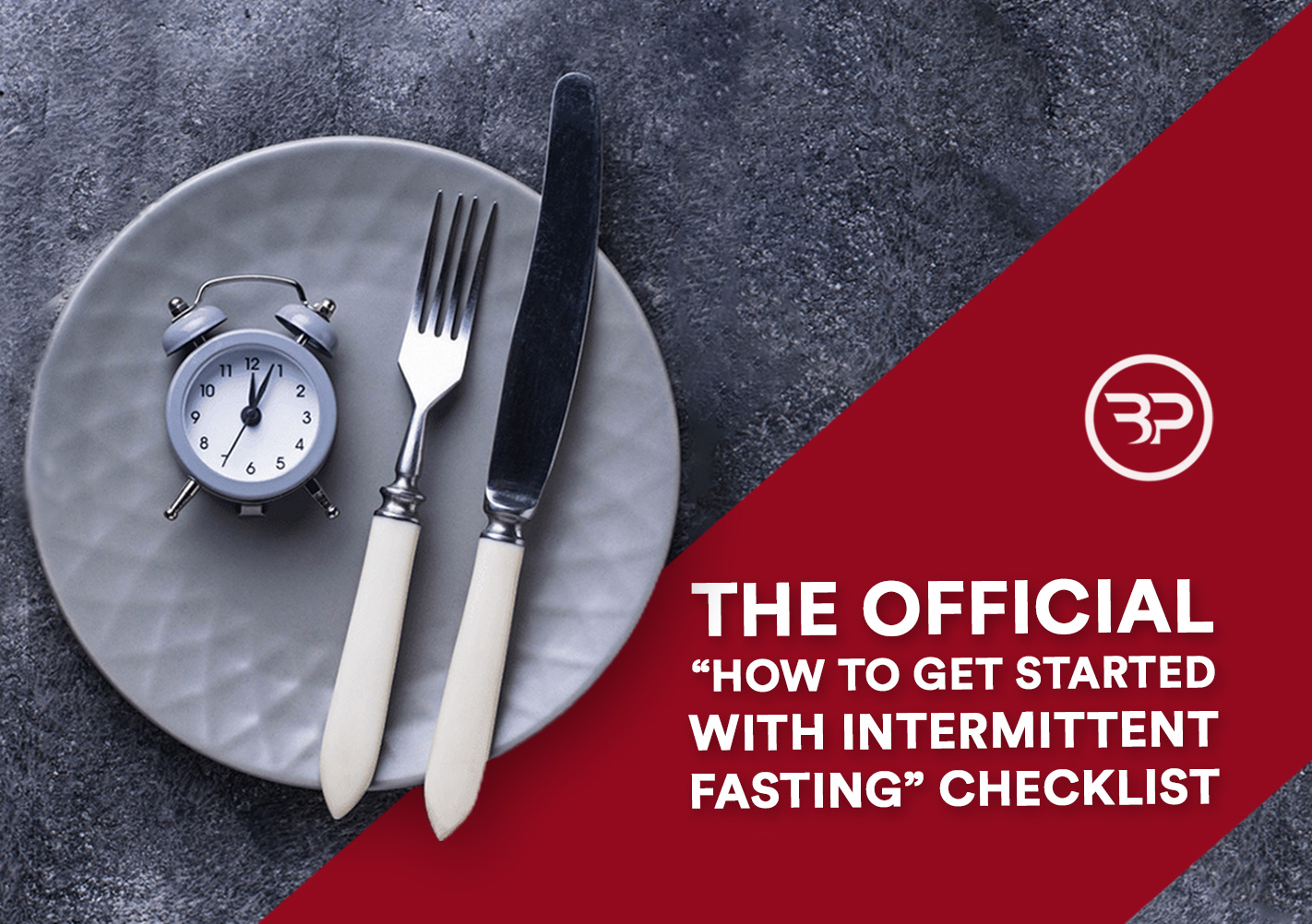Minimalist Muscle Building: Simple Training For Athletic Muscle
September 9, 2014
- Doing Less is key to maximizing your efficiency and accomplishing more.
- Focusing on too many exercises and methods prevents you from progressing.
- The exercises that worked best decades ago still work best today. Stop making everything so damn complicated.
Life is busy, I get it. There are times when clients get busy, they can’t train as often , and training gets scaled back. The same happens with my training too. I glance at my program, look at the clock, and hack away at the unessential parts of the workout when strapped for time.
You should do the same.
To get your best results you need focus. The “fluff” in workouts clouds the view of what’s important and what gets great results.
“So now what? “
You need to cut the clutter and focus on the essentials. This is especially true with training. You don’t need to “isolate” every muscle group and designate one-body part for every day of the week. This cluttered approach leads to over-analyzing, and sub-par results for most everyone.
You have enough to worry about in your day-to-day life, why add training to the list?
You don’t need a thousand different tempos, a complex Eastern European Squat program, and forty exercises to make progress. You need simplicity. You need progressive overload on a few exercises?
Focus on the basic movement patterns, get stronger, and move better. Progressive overload is the key to developing your body, it can’t happen if you’re changing the stimulus every workout.
Quit majoring in the minors, it’s time to get to work.
Principles of Minimalist Muscle Building
Quality Over All:
It’s stunning what happens when reps and weight take a backseat to quality of movement. Injuries fade, performance increases, and confidence sky-rockets.
I see it all the time with new athletes: They come from workouts where all the coach focuses on is how hard everything is with no rhyme or reason.
Yes, overload is still important and necessary for gains. But it does little good piling a ton of weight or conditioning on a faulty system. This sets your body up for injury, not high performance.
“It is quality rather than quantity that matters.” – Seneca
This means staying tight on your deadlifts—busting blood vessels in your left eye and lumbar flexion under 400lbs sucks donkey nuts. Get your chest to the ground on push-ups, sticking your landing on your jumps, and keeping your knees out of valgus (diving in) on your squats.
Pushing yourself to the limit is great. Pushing yourself to the limit with faulty mechanics sucks. Emphasis how well you’re executing the movement instead of how “much”. You’ll get better gains in less time, fewer injuries, and a longer training career—That’s more important than setting a PR every workout.
Basic Exercises are Best:
The body moves as an integrated unit in sport and life; you’re training should reflect that.
Not shiny one-exercise machines, they’re pieces of garbage in nearly all instances. Why? Machines lock the body into place during movement patterns, which removes real-world carry over and negates the role of stabilizing muscles. Although you use more resistance on machines the arms and legs are writing checks the body can’t cash.
Free Weights and movement require your body to work together in a coordinative pattern to perform a task– like real life.
The Only Equipment You Need:
You don’t need a shiny new weight room with every machine imaginable. You don’t need all of these, but a combination definitely won’t hurt.
- Bodyweight
I found this “playground” on my way home from work a few weeks ago.
- Barbells
- Dumbbells
- Suspension Trainer (TRX, Cross Core 180)
- Space to Move
- Bands
The basic movements are the squat, hinge, lunge, sprint, push, and pull because they work muscles at multiple joints simultaneously like movements in life and sport. Also, I core work and conditioning work is essential in every routine. You have no reason to be out of shape or set yourself up for injury with a weak core.
Squat: Front squat, goblet squat, zercher squat, back squat, pistol squat
Hinge: deadlift (all variations), good morning, kettlebell swings
Lunge: walking lunge, split squat, step back lunge, Bulgarian split squat
Sprint: Run fast on a hill, treadmill, and open surface. If you’re an athlete add in change of direction work
Carry: Farmers walks, single arm farmers walk, overhead carry
Press: bench press, push-up, overhead press, jerk, one arm presses
Pull: pull-up, bent-over row, seated row, one arm row
Core: planks, side planks, paloff presses, fire hydrants, glute bridges
Conditioning: Bodyweight circuits, sprints, swimming, intervals, complexes. Get out, get your heart rate up, and have a little fun. Anything recreational like hiking is extra.
Exercise Order for Building Athletic Muscle
To maximize your training with minimalist muscle building you must emphasize strength and performance. That means exercises that are neurologically demanding like cleans, sprints, and heavy lifts go first. Chasing the “pump” when you get to the gym is a surefire route to the town of Smallsville in ugly state of Imstillpissedatmypoorresults.
Use the following Exercise order:
1.)Warm-Up
Activity-specific warm-ups are designed to properly prepare the body for physical activity and sharpen mental focus for the activity at hand. Addressing common issues such as tissue density, tissue length, flexibility and mobility at the beginning of a training session reinforces the fact that movement quality and injury prevention are essential to achieving athletic and wellness goals. By concluding the warm-up with dynamic stretching and neuromuscular activation drills, clients gain the advantage of a routine that can help reduce injury risk, improve muscular tissue density and flexibility, activate proprioceptors and deep stabilizers, enhance movement quality, and improve performance through the creation of more efficient and powerful movement patterns (Shellock and Prentice, 1985). If you have time to sit on Twitter while training then you have time to warm-up properly.
2.) Movement Training
If you’re trying to improve performance with jumps and sprints then these take precedent—even over your heavy lifts. Sprint work is technical; grooving the wrong pattern under fatigued leads to injury and poor performance.
As a bonus, these will ramp your nervous system and prep your body for strength gains.
2) Explosive/Power Lifts: Olympic Lifts
Olympic lifts like cleans and snatches are technical. They need full focus without excessive fatigue to perform them safely and effectively. Olympic lifts are great for gains in power, strength, and muscle—if you know how to do them they’re the most efficient lifts available.
3) Compound Strength: Squats, deadlifts, presses, pulls
If you don’t do the Olympic lifts then bump these movements right after your movement session or warm-up. Pick a couple major movement patterns and perform three to six sets of one to six reps. These should be heavy and difficult, but not past failure. If you’re form breaks down then you’re too heavy.
4) Compound Moderate Rep Work
Pick one or two movements and perform two to four sets of eight to fifteen reps. These should be moderately difficult, not to failure.
5) Free Time
Training should still be fun and a form of stress relief—not a job and complicated manor. For that reason once or twice per week I recommend setting a timer for 10 minutes and have fun. During this time I’ll do some direct arm work, farmer walks, isometrics, extra ab work, or whatever else I want. Pick exercises you like, keep the tempo up, and work hard.
6) Conditioning
Regardless of your goal you should perform some conditioning. Twice per week perform sub-maximal sprints, boxing, bodyweight circuits, push sleds, or complexes. High intensity intervals a few times per week will improve your work capacity and keep body fat low. Take other times to go for a walk, hike, swim, or something recreational and low intensity. There’s no excuse for not being in shape.
Training Frequency for Building Athletic Muscle
If you crave maximal results in minimal time total body workouts are best. You’ll stimulate muscles more often. As a result your body learn movement patterns, stimulate more muscle growth, and make gains faster. Not only that, you’ll train the body as it’s meant to function—as a coordinated machine.
Three total body-training sessions with two conditioning sessions per week is plenty.
As a bonus I’ll add random 5-10 minute workouts of push-ups, pull-ups, squats, band pull-aparts, and core work. This is more for sanity-sake when I’m writing a long post, but it adds up.
Training Considerations:
Athletes: If you’re a competitive athlete this isn’t a program for you. You’ll need more specialization and movement included early in the session with a coach, like me.
Injured, Limited Individuals: If you’re limited due to illness, training injury, or other ailments then you need specialization to treat the issue at hand.
Minimalist Muscle Building Routine
Throughout the week every “movement” should be accounted for. This program uses a 3x/week training split with every movement variation covered. Monday, Wednesday, and Friday are your big days with miscellaneous and mini-workouts taking place on other days as desired.
Monday:
Warm Up
Sprints 6×10, 30 second rest
1a.(Hinge/lower body) Clean Or Deadlift 5×3
1b. (core)Plank 5×30 seconds Rest 30 seconds then repeat
2a.(Vertical Push) Push Press 4×4
2b. (Vertical Pull) Chin Up 4×4
Fun Time: Farmers walks, biceps curls, dips etc. <10 minutes
Tuesday:
Run stairs 15 mins
Wednesday:
Warm Up
Jump Squat 2×5
Medicine Ball Back Toss 2×5
1a.(Push, horizontal) Barbell Floor Press 4×6
1b. (core)side Plank 4×30 seconds Rest 30 seconds then repeat
2a. lunge/lower body) DB Split Squat 3×8-10
2b. (Horizontal Pull) Db Single Arm Row 3×8-10
2c. (Lower) Bench supported Hip Thrust 3×4-5/leg
Fun Time: Farmers walks, biceps curls, dips etc. <10 minutes
Thursday:
Bodyweight Work, 5-10 minutes and a walk
Friday:
Warm Up
Broad Jump 2×3
1a.(Squat/Lower) Back Squat 4×8-10
1b. Farmer 4×30 seconds Rest 60 seconds then repeat
2a.(horizontal pull) Incline single arm Bench Press 3×12
2b. (Horizontal Pull) TRX inverted Row 3×8-10
2c. (lower) single leg squat to bench 3x/5side
Fun Time: Farmers walks, biceps curls, dips etc. <10 minutes
Saturday/Sunday: One day conditioning/sprint work 15-20 minutes and one day completely off.
Or, create your own with this total body template:
1a. Lower Body (lunge, hinge, squat, clean, or snatch)
1b. Upper Body Push (horizontal or Vertical)
1b. Upper Body Pull (Horizontal or vertical)
Include core work during active rest and a weighted carry at least once per week.
That’s it—minimalist muscle building is simple yet effective.
Wrap Up
The Bottom line is your training must align with your goals and abilities. If won’t hit the gym fives times per week why do a workout that requires it?
Simplify, get stronger, and make huge gains.
There are times of greater training intensity and greater focus, but they don’t need to be all the time. You’ll reap huge benefits from a simpler approach to training, and mastering the essential.
Join the Discussion on Facebook:








I like this blog very much so much good info.
Fantastic items from you, man. I have be aware your
stuff previous to and you are just too excellent.
I actually like what you have obtained here, really like what you’re stating and the way wherein you are saying it.
You are making it enjoyable and you still care for to stay it smart.
I can’t wait to learn much more from you. That is actually a wonderful site.